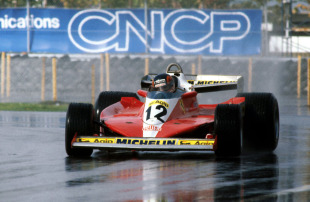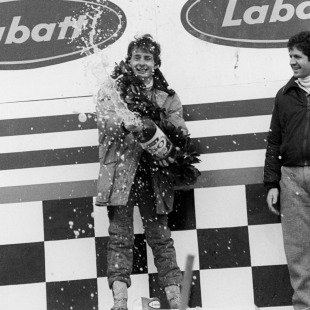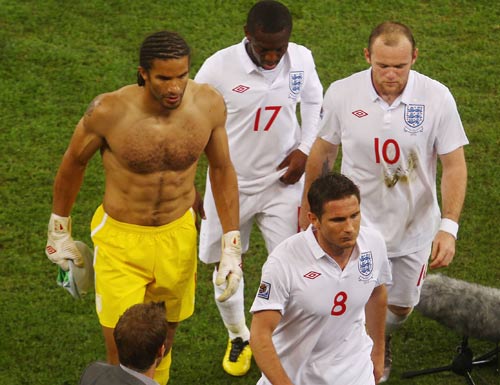- Rewind to ... 1978 Canadian Grand Prix
The making of a Canadian legend
Laurence Edmondson June 10, 2011
- Race:
- Canadian Grand Prix
- Drivers:
- Mario Andretti
- |
- Jean-Pierre Jarier
- |
- Alan Jones
- |
- Jody Scheckter
- |
- Gilles Villeneuve
- Teams:
- Ferrari
- Circuits:
- Circuit Gilles Villeneuve
Formula One first arrived on the Ile de Notre Dame, a manmade island in between the Sainte Lawrence River and Seaway, for the 1978 Canadian Grand Prix. On the surface there was little to get excited about: Mario Andretti had wrapped up the title two races earlier in the dominant Lotus 78, the all-new circuit was replacing the legendary Mosport - albeit for very legitimate safety reasons - and the weather was cold and wet.
But Montreal, as it continues to do to this day, opened its arms to F1 and the circuit was an instant hit, especially with Jackie Stewart who described it as "a little paradise in the middle of a great river".
The new venue had cost $2 million to build and was set in among ornamental lakes and futuristic building left over from the 1967 World's Fair, for which the land had been reclaimed. The Québécois people turned out in droves for the practice sessions, with the added incentive of seeing local boy Gilles Villeneuve in a Ferrari. He had built up a reputation over his first full season in F1 and didn't disappoint when he hit the circuit in the wet, flinging his 312 T3 from corner to corner as he set about learning the track with the rest of the F1 field.
Back in 1978 the circuit consisted of 17 corners and on Saturday the skies finally cleared to give the drivers the opportunity to attack all of them in the dry. Jean-Pierre Jarier ended up quickest in his second race for Lotus following the death of Ronnie Peterson at Monza, ahead of Jody Scheckter and Villeneuve in third. The grid gave the local fans plenty to talk about overnight with Villeneuve just 0.215 off pole position and Jody Scheckter, in the Canadian-owned Wolf, just 0.011 adrift.
By Sunday Formula One fever had swept across the city and 72,632 fans turned out in the hope of celebrating some kind of a home win for the first time in the 11-year history of the Canadian Grand Prix. Canadian prime minister Pierre Elliot Trudeau was among them and he made his way down to the grid to wish his countryman good luck.
When the green light came on Jarier got a clean getaway but Scheckter's Wolf slewed sideways with excessive wheelspin and hampered Villeneuve, allowing Alan Jones to sneak into second. It soon became clear why the Lotus 78 had wrapped up the championship two races early, as Jarier extended his lead lap-by-lap over the battle for second. On lap 18 Scheckter found a way past Jones and he was quickly followed by Villeneuve, who went on to beat the Wolf into the hairpin on lap 25.
The Ferrari then set after the race leader and at half distance started to reel the Lotus in. Villeneuve was pushing hard in his customary sideways manner, but it soon became clear that Jarier had a problem and was beginning to slow. The Frenchman's brakes were fading fast and when he coasted into the pits on lap 49, a quick investigation by the pit crew revealed a terminal oil leak spilling onto the discs. The crowd quickly realised the significance of the stationary Lotus and roared into life as Villeneuve crossed the line to start lap 50 of 70 in a comfortable lead, although from inside the cockpit Villeneuve was anything but comfortable.

It simply wasn't in Villeneuve's DNA to drive slowly. This was a man who had honed his talent in snowmobile racing and pushed on almost every lap of his junior career to get a chance in F1; he simply wasn't accustomed to backing off. But nor was he stupid and, when the conditions called for it, he forced himself to take it easy.
"It affected my rhythm," he admitted. "I'd just done nearly fifty laps, shifting: bang-bang, and clutching: bang-bang. Then I had to do the whole thing in slow motion: push the clutch, change the gear, release the clutch."
The fans didn't care that he'd knocked the edge off his driving and in the last few laps went wild as their dream result edged ever closer. Meanwhile, Villeneuve had taken to talking to himself in the privacy of his black and orange helmet: "I never saw them. I just kept saying to myself: 'Ferrari is the best. It doesn't break. It never breaks!"
His trust in the Italian engineering behind him was well placed and after one hour 57 minutes and 49.196 seconds he crossed the line to take his debut victory in Formula One.
"To win a grand prix is something, but to win your first grand prix at home is completely unthinkable," he said in the paddock afterwards. "I have to thank Mr Ferrari and all the team. It's an enormous satisfaction. This is the happiest day of my life."
As the heat of the moment passed Villeneuve, in his sweat-soaked overalls, soon began to feel the cold and was lent a brown parka jacket to wear on the podium. In keeping with what was a uniquely Canadian ceremony, Villeneuve was also handed a huge bottle of Labatt beer to spray rather than the traditional champagne. It was clear to everyone present that the 28-year-old Villeneuve was very, very special.
Laurence Edmondson is an assistant editor on ESPNF1
© ESPN Sports Media Ltd.
 Laurence Edmondson is deputy editor of ESPNF1 Laurence Edmondson grew up on a Sunday afternoon diet of Ayrton Senna and Nigel Mansell and first stepped in the paddock as a Bridgestone competition finalist in 2005. He worked for ITV-F1 after graduating from university and has been ESPNF1's deputy editor since 2010
Laurence Edmondson is deputy editor of ESPNF1 Laurence Edmondson grew up on a Sunday afternoon diet of Ayrton Senna and Nigel Mansell and first stepped in the paddock as a Bridgestone competition finalist in 2005. He worked for ITV-F1 after graduating from university and has been ESPNF1's deputy editor since 2010

